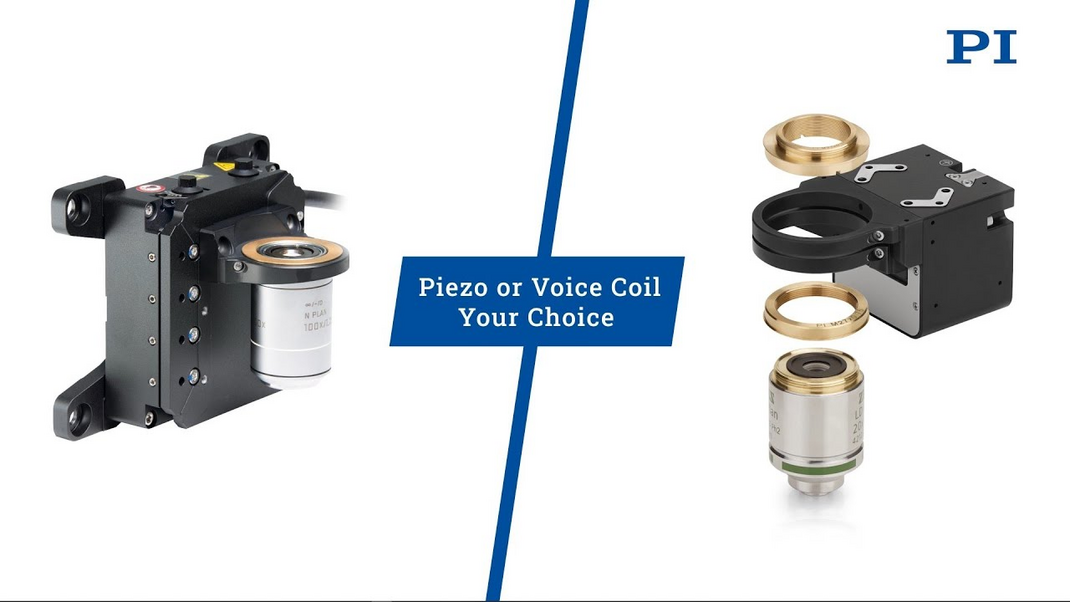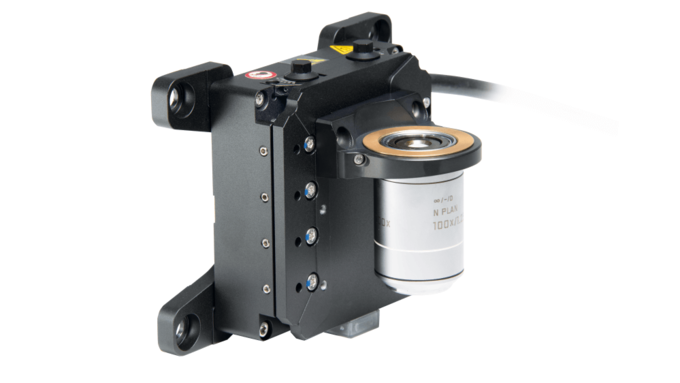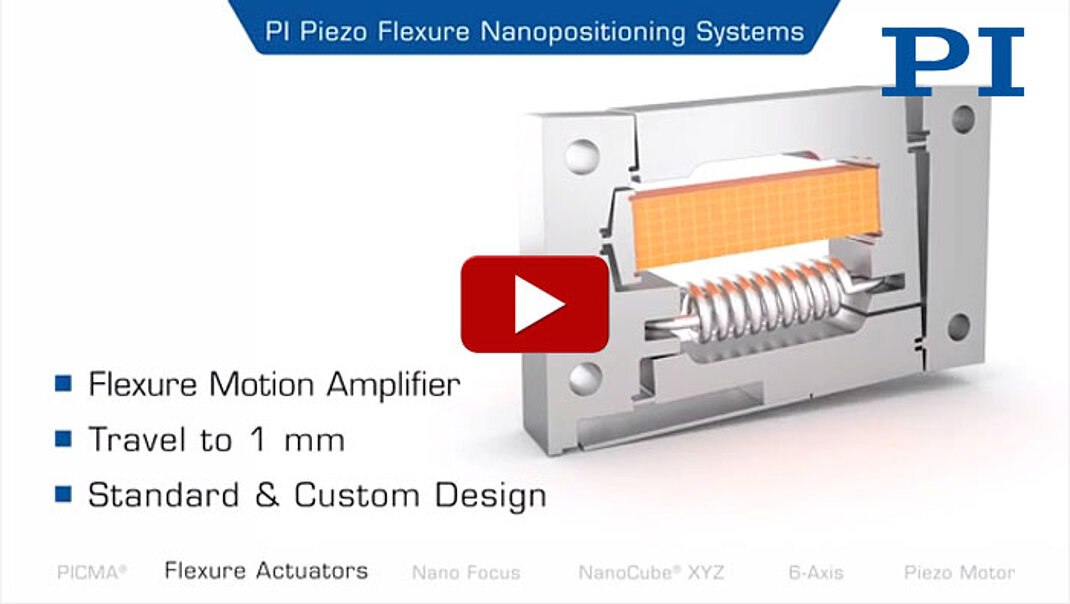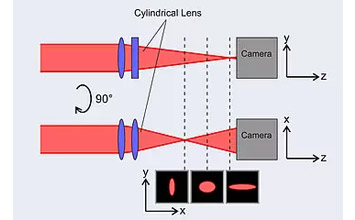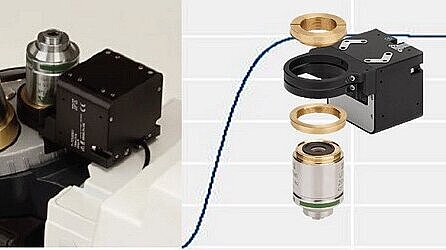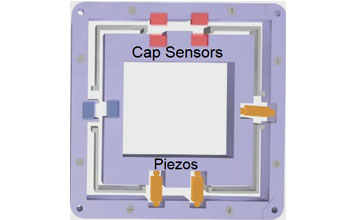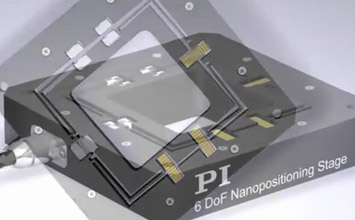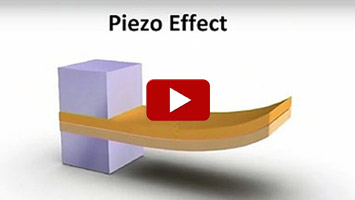Nanofocusing Stages with Piezo Motors & Voice Coil Motors
Faster Nanopositioning Solutions for Microscope Objective Scanning, High Resolution Imaging, and Focus Control
Three technologies are available to provide fast focus control for high resolution microscopes, laser machining or surface metrology. Piezo flexure stages are commonly used when the highest resolution and dynamic performance is required, and space is limited, typically with motion ranges <1mm. Voice coil motors provide a good compromise of longer travel ranges fast settling while maintaining nanometer resolution. Piezo motors can also provide millimeters of travel with high stiffness and the advantage of holding a position stable without power. All three nano-positioning technologies have specific advantages and limitations and are widely used in microscope objectives focus control (auto focus) etc. They have in common excellent resolution and speed, typically one order of magnitude higher than conventional stepper motor driven stages. Their motion controllers are compatible with major image acquisition software packages to provide high performance images for deconvolution microscopy, Z-stack image acquisition, and other super-resolution techniques. Settling times are typically in the low millisecond range. High guiding precision is achieved with frictionless, computer optimized flexures. Optical and capacitive feedback sensors guarantee nanometer and sub-nanometer precision in closed-loop operation.
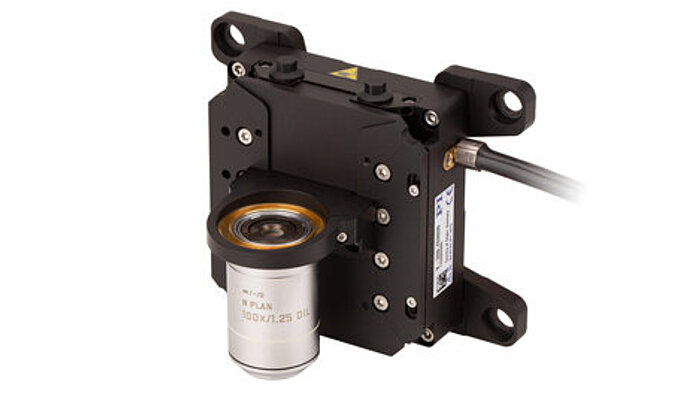
V-308 Fast Nano Focus
Voice Coil Scanner, 7mm
- 7mm motion
- Voice coil linear motor
- Adjustable Z-counterbalance
- Millisecond settling time
- 1nm sensor resolution
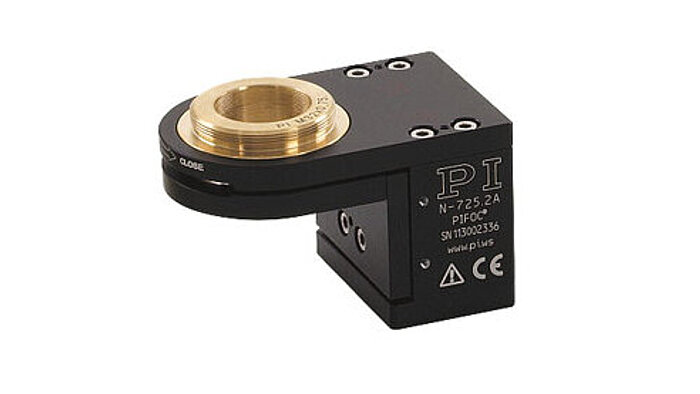
N-725 PIFOC® Fast Piezo Nano Focus
2mm, PiezoWalk® Motor
- 2000µm motion
- PiezoWalk® motor, self-locking
- Package with controller
- Millisecond settling time
- 0.5nm sensor resolution
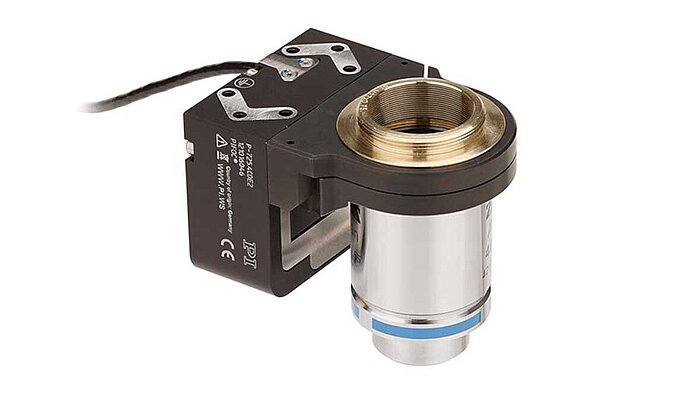
P-725 High Performance Piezo Focus Scanner
Up to 800µm, Sub-Nanometer Precision
- 100, 400, 800µm motion
- Combines higher dynamics & longer travel
- Millisecond responsiveness
- Ideal for autofocus, metrology, pathology
- New high performance controller
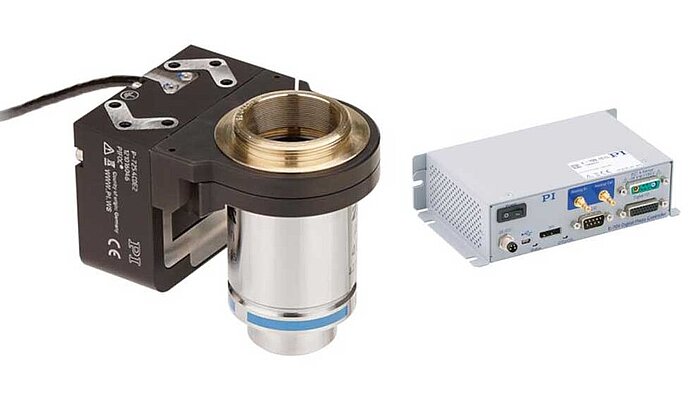
P-725 Piezo Focus Scanner Package
Economical Package with Controller
- 100 and 400µm motion
- Complete with digital controller
- Millisecond responsiveness
- Ideal for autofocus, metrology, pathology
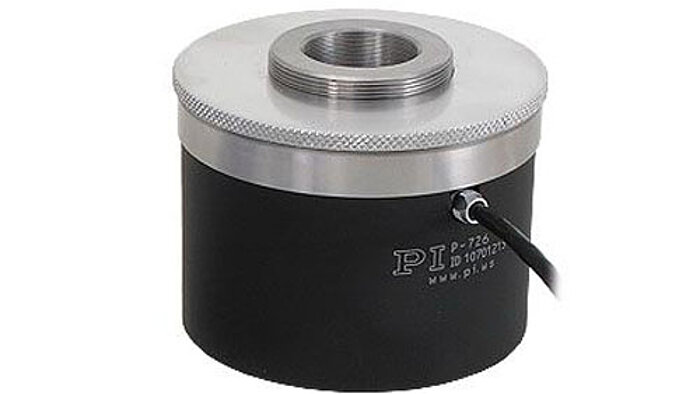
P-726 PIFOC® Fast Piezo Nano Focus
100µm, High-Stiffness, High End
- 100µm motion
- Ultra-stiff for heavy objectives
- Millisecond settling time
- Enhanced focus stability
- Compatible with imaging software
Application Note
The P-726 provides the highest stiffness and fastest response time with heavy objectives.
An application of the P-726 with the E-753 digital controller is described in this article “Remote refocus enables class-leading spatiotemporal resolution in 4D optical microscopy”, where also the U-780 XY microscope stage and the P-737 Piezo-Z stage were employed in the test setup.
PIFOC objective focusing stages are utilized to achieve fast and nanometer precise focusing in microscopes, surface metrology equipment, or similar optical devices. PI offers two fundamentally different designs – piezo objective nanopositioners and voice-coil nanopositioners. The compact piezo objective positioners can be mounted easily on upright and inverted microscopes. They insert between the microscope turret and the objective lens.
The V-308 voice-coil objective focusing stage is designed for OEM nano-focus applications and custom microscopes, or wherever long travel ranges of several millimeters with nanometer precision are needed.
The piezo objective nanopositioners are completely frictionless, based on the flexure guiding system and solid-state piezo drives. In addition to sub-nanometer resolution, these high-performance compact positioners also provide extremely fast response and can operate with high mechanical bandwidth in scanning applications.
The PIFOC series piezo objective positioners are ideal for high-speed and high-dynamic performance in surface metrology, confocal scanning microscopy, super-resolution microscope, etc.
- Faster Scanning Speeds: PI Piezo objective nanopositioners offer much faster step/settle and scanning speeds than traditional mechanical scanners. This allows for faster data acquisition, which is especially important for time-sensitive experiments.
- High Accuracy: PI piezo objective nanopositioners can achieve sub-nanometer position resolution, which is critical for applications such as single-molecule imaging and super-resolution microscopy.
- High Dynamic Performance: The stiff mechanical design of PI piezo objective scanners allows for high dynamic performance, which means that they can move quickly and respond rapidly to changes in the input signal. This allows for precise control and faster scanning.
- Maintenance Free: Due to the use of a non-contacting, zero-wear design, PI piezo scanners are completely maintenance-free and provide a virtually unlimited service life, ideal for 24/7 automation applications.
- Versatility: Piezo objective scanners can be used with a wide range of microscopy techniques, including confocal microscopy, multi-photon microscopy, and laser scanning microscopy.
- Stability: PI closed-loop piezo objective nanopositioners offer excellent stability and can maintain their position over extended periods of time, which is critical for long-term experiments.
- Easy to Use: PI piezo objective scanners are easy to use and can be easily integrated into existing microscopy setups. The cable exit is designed for minimum interference with adjacent objectives and secure mounting is achieved with a dual radial clamp for excellent stability. A wide range of controllers with easy-to-use software and special firmware commands such as fast focus and freeze, makes them very versatile and valuable.
With the use of flexures mechanisms, the motion of a piezo stack can be multiplied many times to achieve up to one millimeter travel (or more in extreme cases). Flexures can be designed to also double as guiding and preloading mechanisms. Flexure motion is based on the elastic deformation (flexing) of a solid material. Friction and stiction are entirely eliminated, and flexures exhibit high stiffness, load capacity, and resistance to shock and vibration. Flexures are maintenance free and not subject to wear. They are vacuum compatible, operate over a wide temperature range, and require neither lubricants nor compressed air for operation.
